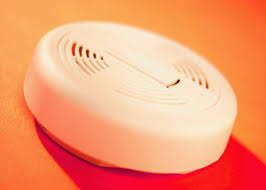Is your home FIRE SAFE?

FIRE SAFETY IS SERIOUS. If we show our children that we take fire safety seriously, they will take it seriously.
Create your FAMILY ESCAPE PLAN.
Get your family together and take some time to create a simple, easy to understand FAMILY ESCAPE PLAN. There should be two ways out of every room and there should be a FAMILY SAFE meeting place outside of your home where everyone meets once they are out of the house.
Practice, Practice, Practice
We teach our children every day that practicing something makes us good at it. Practicing FIRE SAFETY is no different. PRACTICE the FAMILY ESCAPE PLAN you and your family have created. PRACTICE several times all together then have the youngsters PRACTICE several times by themselves to make sure they understand what they do in the event of a fire. Take a little bit of time every month to PRACTICE YOUR FAMILY ESCAPE PLAN.
Check out www.firesafekids.org for lots of fun activities and coloring pages about fire safety!
Keep your HOME SAFE by installing SMOKE ALARMS
We’ve all had our SMOKE ALARMS go off for silly things like burnt toast but remember SMOKE ALARMS WITH NO BATTERIES ARE USELESS! Statistics show that more than half of all fire deaths occur in homes with no smoke alarms, and nearly three quarters of fire deaths occur in homes without alarms or with non-functioning alarms. By placing smoke alarms in your home, you can increase the chances that all of your family gets out safely by 40-50%!
A SMOKE ALARM in every room is ideal. They need to be placed throughout your home and most importantly in every bedroom. And don’t forget to CHANGE THE BATTERIES TWICE A YEAR! Remember WORKING SMOKE ALARMS SAVE LIVES!!
TEST YOUR SMOKE ALARMS! Test your smoke alarms once a month and make sure they are working properly. This might be a good day to PRACTICE YOUR FAMILY ESCAPE PLAN. While your at it, make sure everyone knows the SOUND OF THE SMOKE ALARM.
Also, if your SMOKE ALARMS are 10+ years old or you don’t know if they are working properly, replace them. New technology can offer a better level of protection for your family.
Always keep your FIRE SAFE eyes open!
Fire Prevention is a daily activity and if everyone in the family knows to pay attention to such hazards as a shirt thrown over a lamp, a stuffed animal laying in front of a heater or many other numerous hazards in the house, fires can be avoided.
Be careful when cooking.
Make sure your youngsters never cook without proper supervision. Keeping all the cooking surfaces clean is a good way to avoid grease fires. Many fires begin in the kitchen.

Every home should have a FIRE EXTINGUISHER!
Keeping a FIRE EXTINGUISHER inside a door or entrance out of the reach of children and away from places where fires could develop could aid in stopping a small fire from getting out of control. A FIRE EXTINGUISHER is not a substitute for the fire department but knowing how to correctly use one in an emergency could save you a world of heartache.

HOME EQUIPMENT USE: ARE YOU DOING THE RIGHT THING THE WRONG WAY?
Are you doing the right thing the wrong way - for example, trying to eliminate the fire hazards around your home and in the process starting a wildland fire? Each year CAL FIRE responds to more than 1,600 fires started by Californians using equipment the wrong way. Whether working to create a defensible space around your home, just mowing the lawn, or pulling your dirt bike over to the side of the road, if you live in a wildland area you need to use all equipment responsibly. Lawn mowers, weed eaters, chain saws, grinders, welders, tractors, and trimmers can all spark a wildland fire. Do your part, the right way, to keep your community fire safe.
Here’s how to do it the Right Way:
Do all yard maintenance that requires a gas or electrical motor before 10 a.m. Not in the heat of the day, or when the wind is blowing! Lawn mowers are designed to mow lawns. Never use lawn mowers in dry vegetation. Use a weed trimmer to cut down dry weeds and grass.
Remove rocks in the area before you begin operating any equipment. A rock hidden in grass or weeds is enough to start a fire when struck by a metal blade.
In wildland areas, spark arresters are required on all portable gasoline powered equipment including tractors, harvesters, chain saws, weed eaters, mowers, motorcycles, and All Terrain Vehicles (ATVs). Keep the exhaust system, spark arresters and mower in proper working order and free of carbon buildup. Use the recommended grade of fuel and don’t top off. Keep the engine free of oil and dust and keep the mower free of flammable materials.
In wildland areas, a permit may be required for grinding and welding operations, and spark shields may be required on equipment. Be sure to have 10 feet of clearance, a 46″ round point shovel, and a backpump water-type fire extinguisher ready to use.
Hot exhaust pipes and mufflers can start fires you won’t even see, until it’s too late! Don’t pull off into dry grass or brush.
Keep a cell phone nearby and call 911 immediately in case of a fire.
(Credit: www.fire.ca.gov)
